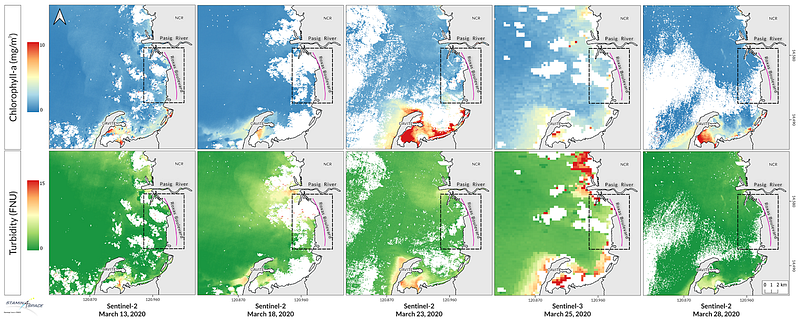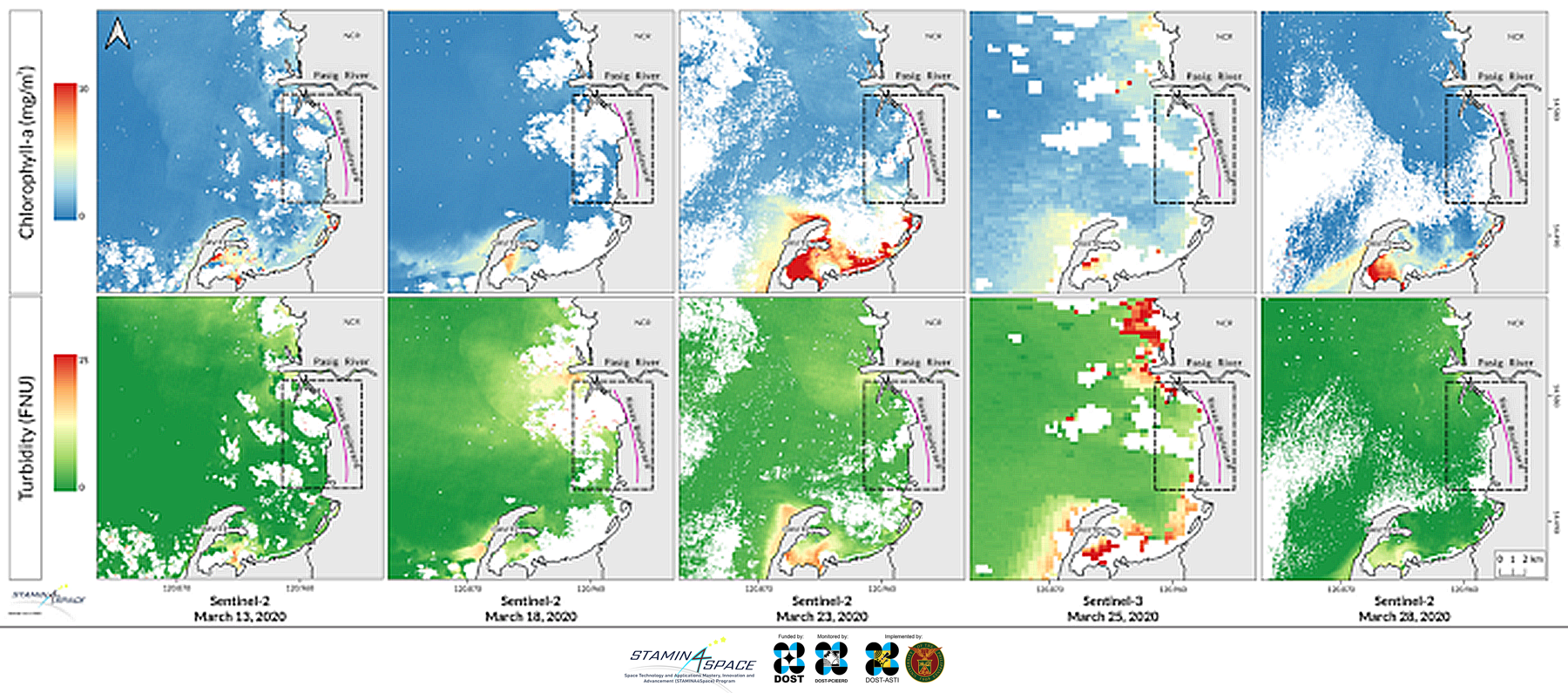Turquoise waters of Manila Bay may suggest pollution, analysis of satellite images show.
Using satellite images from the European Space Agency’s Sentinel-2 and Sentinel-3, researchers from the Space Technology and Applications Mastery, Innovation and Advancement (STAMINA4Space) Program were able to observe the possible reason behind the change in the color of Manila Bay.
This was after pictures of Manila Bay waters turning turquoise circulated last March 25, 2020, a week after the Luzon-wide enhanced community quarantine took effect.
Using the spaceborne images, researchers were able to estimate the chlorophyll-a concentration and water turbidity in the area from March 13 to March 28. High water turbidity could indicate high water pollution while chlorophyll-a concentration suggests algal abundance.

In the images, relatively high chlorophyll-a and turbidity values were already observed as early as March 23, with turbidity levels doubling up by March 25, suggesting that the change in color of Manila Bay waters could be attributed to high water pollution. However, since chlorophyll-a levels did not increase significantly around Manila Bay (area in box), the change of water color could not be attributed to algal bloom.
The areas in red, Pasig River and Bacoor Bay, were deemed as the ‘hotspots’. Depending on the wind direction and water circulation, the waters from these areas possibly influenced the waters of its neighboring Manila Bay.
Pollutants from aquaculture, industry, and commercial establishments contribute to the turbid waters of Bacoor Bay, while collective wastes from residential, commercial, and industrial activities negatively impact the water quality of Pasig River.
Significant decline in chlorophyll-a and turbidity was already observed by March 28.
For more Diwata images, visit the Featured Image page.

